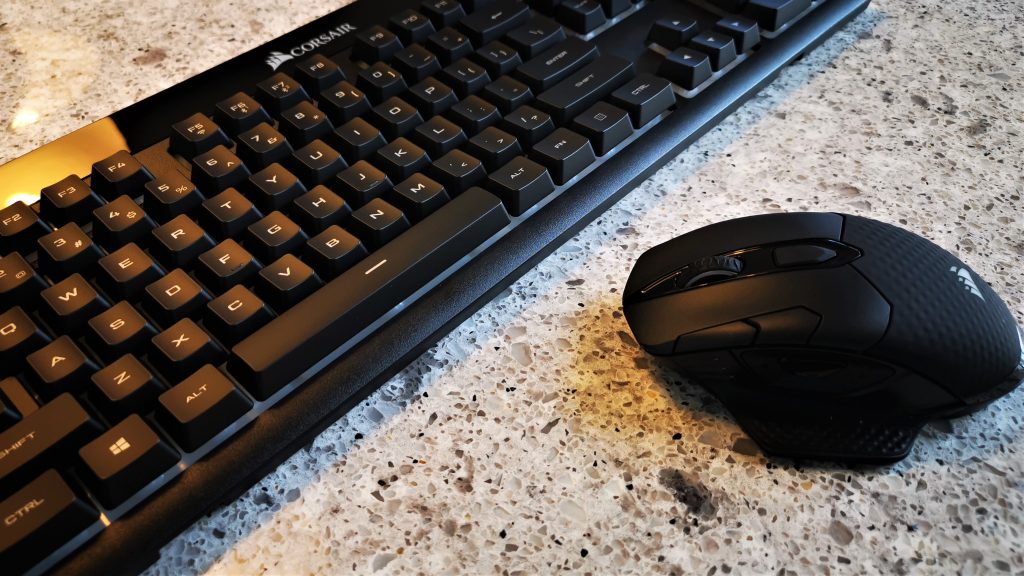CORSAIR DARK CORE RGB SE WIRELESS GAMING MOUSE
The fact that this mouse is wireless through Wi-Fi @ 2.4Ghz or BT is excellent, although I wish their was a place in the mouse for the USB key when not being used on a system. The feel and movement of this mouse is great with a 16,000 DPI optical sensor and this is iCue compatible but… It will not sync so that it changes colors at the same time as the rest of your iCue gear.
There is a great feel to this mouse and it is available at Amazon for $69.99 at Amazon.
CLOSING THOUGHTS
PCIe 4.0 has been a while in the making but this system has so much more than simply that, the most used by myself easily being dual Thunderbolt 3. The graphics adapter, or at least performance with respect to it… is frustrating, especially since I have tried drivers, software re-installation, and even switching cards. I have this feeling that it is something in the settings that I am not familiar with.
I am still really impressed with the passive and active cooling ASRock has incorporated into the Hyper M.2 locations of this motherboard.
CPU-Z
 The SSD Review The Worlds Dedicated SSD Education and Review Resource |
The SSD Review The Worlds Dedicated SSD Education and Review Resource | 


Its v odd you dont compare the nvme’s results when connected to the chipset nvme port?
Perhaps you could elaborate?
It seems inevitable that chipset lanes are degraded vs native lanes, but by how much? Comparinga pcie 4 nvme on each type of nvme port seems a good test, & pertinent to many nvme buyers.
Peter is saying that the two NVMe ports are powered by different “grades” of PCIe lanes. One port is powered by native PCIe 4.0 lanes from the CPU, The other is powered by PCIe 4.0 lanes coming from the chipset.
The Ryzen 3 series has 24 lanes of PCIe 4.0 connectivity. (Check Anandtech article here: https://www.anandtech.com/show/14161/the-amd-x570-motherboard-overview). The breakdown is 16x for graphics, 4x for NVMe, 4x for the Chipset link.
The chipset offers an additional 24 lanes of PCIe 4.0. But all of those are bottlenecked by that 4x link between chipset and CPU.
So one of those NVMe ports is “native” to the CPU and will run full tilt. The other is sharing bandwidth with all of the USB ports, the TB3 ports, the wired network controller, the wireless/BT controller.
Hardware which are used in these devices are too good and reliable and the proficiency is beyond the mark.
Just bout one of these. Like you I was attracted to the TB3 ports. My Windows based laptop with TB3 needed me to turn it on in the bios for it to work. Did you have to do anything special to make TB3 run at full speed? Did you get a chance to experiment with routing video into one of the a DisplayPort input ports? If so how did that go. Does it work as full TB3 with a video signal included?